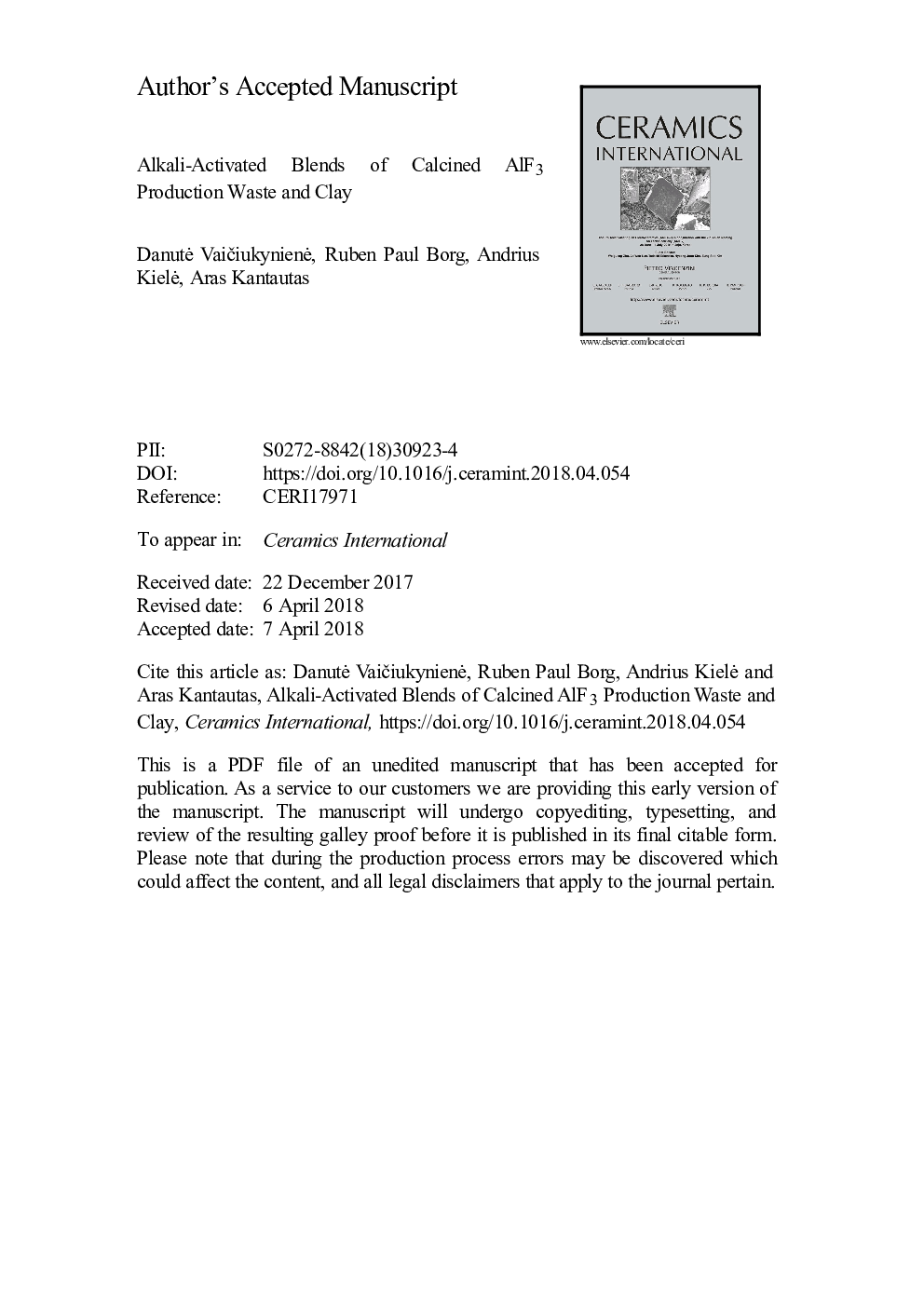| Article ID | Journal | Published Year | Pages | File Type |
|---|---|---|---|---|
| 7887144 | Ceramics International | 2018 | 22 Pages |
Abstract
Recently, alkali-activated materials have shown great potential for use in the construction industry. The aim of this research was to study the properties of alkali-activated clay and the effect of incorporating AlF3 production waste from a fertilizer production plant. The AlF3 production waste, which was rich in alumina and silica, contributed to improved mechanical behaviour for all the mixtures investigated. This demonstrated the potential for use of this waste material. It was also noted that the dosage of Na2O, Al2O3, and SiO2 are significant factors that influence the binding mechanism and properties of alkali-activated clay samples. The raw materials, precursors, and alkali-activated samples were investigated by X-ray diffraction, fluorescence spectroscopy, and scanning electron microscopy. The highest compressive strength (17.50â¯MPa) was observed for alkali-activated clay samples containing 25% AlF3 production waste, with an increase in compressive strength of up to 64% compared to the samples without the AlF3 production waste. Deleterious natrite was shown to form in the samples without the production waste, which could be the reason for the lower observed mechanical properties of such samples.
Keywords
Related Topics
Physical Sciences and Engineering
Materials Science
Ceramics and Composites
Authors
DanutÄ VaiÄiukynienÄ, Ruben Paul Borg, Andrius KielÄ, Aras Kantautas,
